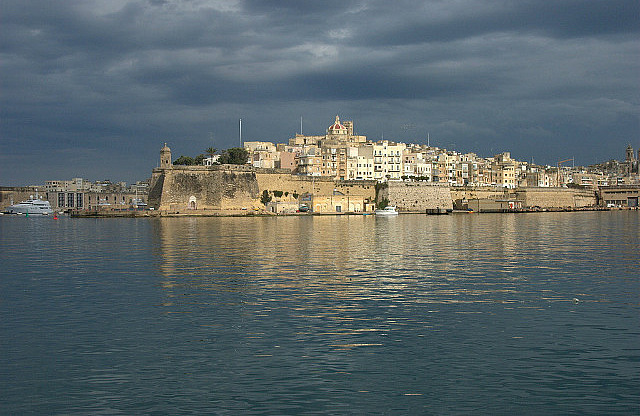Tiny Maltese islands have been ruled by countries on almost every shore of the Mediterranean, from Spain in the west to Greece in the east, from Italy to the north to Tunisia in the south. The lasting legacy is from the pan-European Knights of St John, who based themselves on the island of Malta, and who built the major churches and defensive works on the islands.
before 218 BC - Phoenician rule from Carthage (Tunisia), North Africa.
to 395 AD - Roman rule from Rome, Italy.
to 870 AD - Christian Byzantine/Greek rule from Constantinople (Istanbul, Turkey).
to 1091 - Muslim Arab rule from Tunisia, North Africa.
to 1409 - ruled by various Christian princes from Sicily, Italy.
to 1530 - Christian Spanish rule from Zaragoza, Spain.
to 1798 - ruled by Christian Knights of St John, leased from Spain. 1565 - withstood naval siege by Ottoman Turkish Empire.
to 1800 - rule by Napoleon from Paris, France.
to 1964 - British rule from London, UK.
1964 - Independent Malta established.
Malta is the crossroads of the Mediterranean. Our tour guide looks like a young Italian lady, but her language Maltese is essentially a medieval version of Arabic, but written in latin alphabets. It has recently joined the European Union, but has long maintained friendly contacts with its culturally similar neighbors: Libya and Lebanon in the Arab world. Its official language is Maltese and English (after its long-time ally and colonial ruler), but its Latin links are deep: ever since Spain wrested the islands from the Arabs, the islands have been heavily fortified as a bulwark against the Muslim East for the collective Christian West, in the form of the Knights of St John, represented by catholics from all of western Europe at the time. The Maltese were forced to convert to Christianity and to eat pork in order to assure its loyalty, and they demonstrated extraordinary bravery fighting on the side of the British and the Allies during World War II.
It was raining this day so our scenic tour basically consisted of peeking out the bus window, with occasional photo-taking hops outside. The island is full of handsome houses built of locally quarried limestone. Huge churches and mammoth fortifications are found along every harbor passable by ships. Even between small cities surrounding the capital city Valletta there are huge walls and massive gates. A most notable church is the Dome of Mosta, built as a copy of the Pantheon in Rome. The amount of defensive construction work that created this is incredible, all made from handsome cream-colored local limestone. Beautiful shorelines and fishing boats complete our tour of the island.

